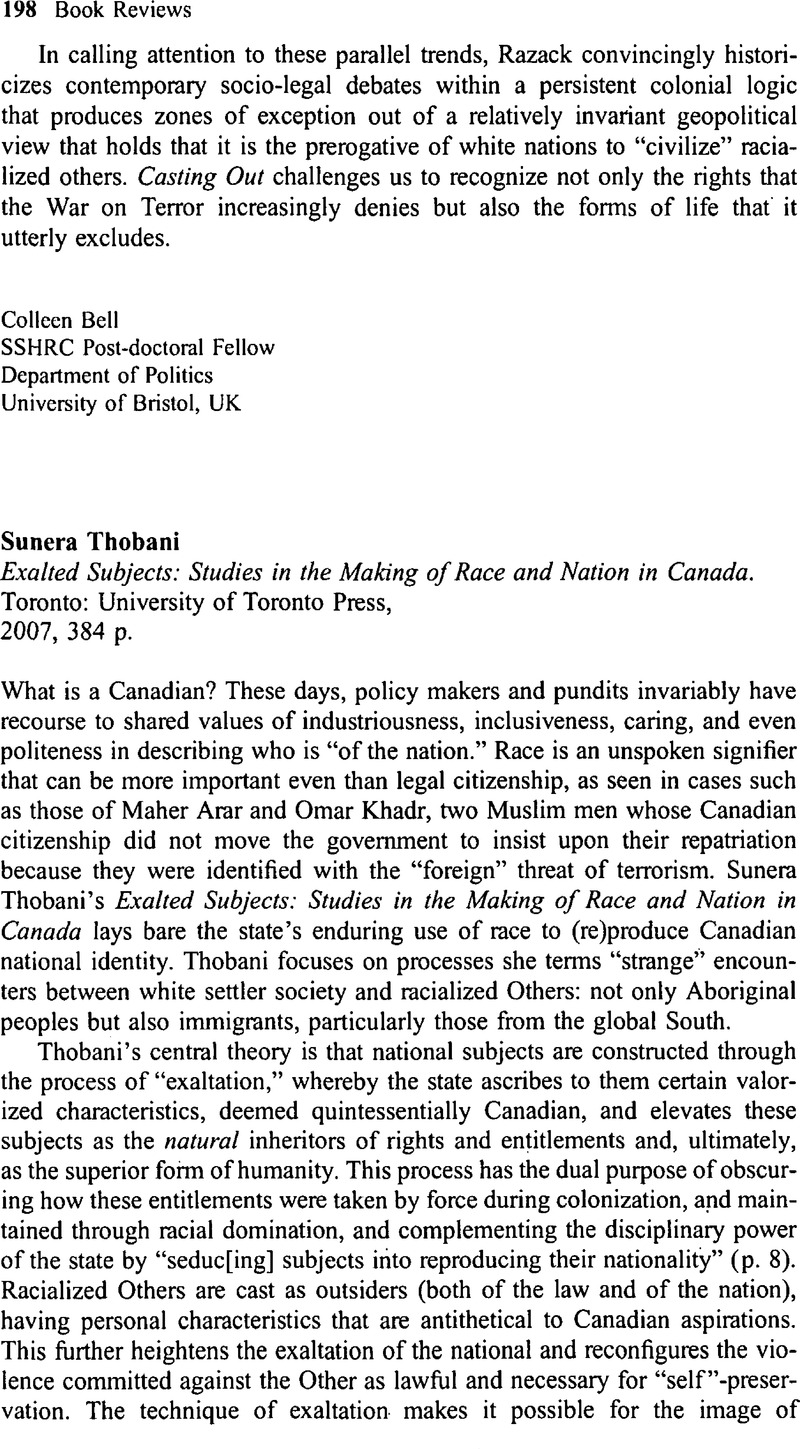No CrossRef data available.
Article contents
Sunera Thobani Exalted Subjects: Studies in the Making of Race and Nation in Canada. Toronto: University of Toronto Press, 2007, 384 p.
Published online by Cambridge University Press: 18 July 2014
Abstract

- Type
- Book Reviews/Comptes-Rendus
- Information
- Canadian Journal of Law and Society / La Revue Canadienne Droit et Société , Volume 23 , Issue 1-2 , April 2008 , pp. 198 - 200
- Copyright
- Copyright © Canadian Law and Society Association 2008
References
4 For examples of theorists using this “post-intersectionality” or “multidimensionality” framework, see Hutchinson, Darren Lenard, “Identity Crisis: ‘Intersectionality,’ ‘Multidimensionality,’ and the Development of an Adequate Theory of Subordination,” Michigan Journal of Race and Law 6 (2001): 285–316Google Scholar; Ehrenreich, Nancy, “Subordination and Symbiosis: Mechanisms of Mutual Support Between Subordinating Systems,” University of Missouri at Kansas City Law Review 71 (2002): 251–324Google Scholar; Kwan, Peter, “Jeffrey Dahmer and the Cosynthesis of Categories,” Hastings Law Journal 48 (1997): 1257–92Google Scholar.
5 See, e.g., Razack, Sherene, Dark Threats and White Knights: The Somalia Affair, Peacekeeping, and the New Imperialism (Toronto: University of Toronto Press, 2004)Google Scholar; McClintock, Anne, Imperial Leather: Race, Gender and Sexuality in the Colonial Context (New York: Routledge, 1995)Google Scholar; Nagel, Joane, “Masculinity and Nationalism: Gender and Sexuality in the Making of Nations,” Ethnic and Racial Studies 21 (1998): 242–69CrossRefGoogle Scholar.
6 See McClintock, Imperial Leather, on this “naturalizing” effect of patriarchy; for the use of this phrase see Cooper, Frank Rudy, “Race, Sex and Working Identities: Against Bipolar Black Masculinity: Intersectionality, Assimilation, Identity Performance and Hierarchy,” UC Davis Law Review 39 (2006): 853–904Google Scholar, there speaking of the common interest of singly and multiply subordinated groups in defeating this structuring of society.




